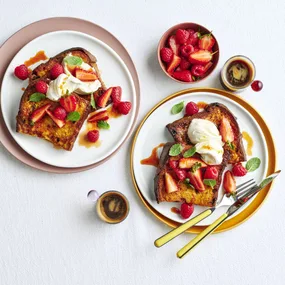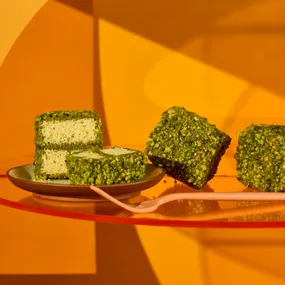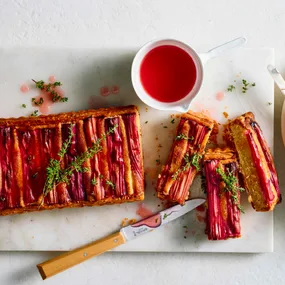We’re more than a little smitten with sweet fried dough and it seems we’re not alone – versions are made across the globe, be they Greek loukoumades drenched in fragrant honey, French beignets dusted in a snowstorm of icing sugar, or Italian bomboloni just made for dunking into an espresso. And then there are Spanish churros and rosquillas, Israeli jam-filled sufganiyah – the list goes on. We embrace all these multicultural examples of golden-fried goodness, but we must admit to being partial to the all-American ring-shaped doughnut.
According to The Oxford Companion to Food, the history of the doughnut in the US dates back to the early 19th century. In A History of New York (1809), Washington Irving wrote of “balls of sweetened dough, fried in hog’s fat, and called dough nuts, or oly koeks”, as the Dutch settlers called them.
It wasn’t until the mid-19th century that they took on their now-signature ring shape. It’s not clear how the shape came about, it may have been a matter of necessity. In their hole-less state, it wasn’t uncommon for the centres to remain uncooked. Then some bright spark worked out that punching a hole in the centre of the fritters allowed for even cooking and a much more satisfactory result.
One legend involves a ship’s captain from New England and his mother, one Elizabeth Gregory, whose doughnuts filled with nuts were held in high regard. It’s said Mrs Gregory packed her son, Captain Hanson Gregory, off on a voyage with a supply of her doughnuts, along with the recipe to make more. Not liking the nutty filling, Captain Gregory apparently instructed the ship’s cook to remove the centres and henceforth make all doughnuts with a hole in the middle. Voilà! Whether this is what occurred way back in 1847 remains murky. What is indisputable is the vigour with which doughnuts rose to popularity.
Some doughnuts are made with a cake-like batter; others, like the ones here, have a yeast-leavened dough. The key to success with the latter is dough with a high water content, so don’t be concerned that the mixture is quite wet – it needs to be in order to become crisp and light once it bubbles away in hot oil. The temperature of the oil is critical – too cool and the doughnut will be oily; too hot and the outside will be over-brown before the inside is cooked through. And the final question: to sugar or to glaze? It’s difficult to choose, but, whichever way you go, it’s a win. Perhaps no one says it better than Homer Simpson and we echo his immortal words: mmm, doughnuts.
Ingredients
Method
Main
Note When you’ve cut out these ring-shaped doughnuts, you’re left with 16 centres. Don’t let them go to waste. Fry them until they’re golden (a couple of minutes), then dust them in cinnamon sugar for the perfect mouthful.
Notes










